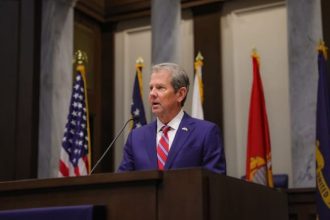The White House Council on Environmental Quality (CEQ) has released updated guidance and a model template for how federal agencies implement the National Environmental Policy Act (NEPA), marking what officials describe as the most significant permitting reform effort since the law was enacted 55 years ago.
The Sept. 29 release builds on President Donald Trump’s day-one executive order on energy development and follows Congress’s 2023 and 2025 amendments to NEPA, as well as the Supreme Court’s May decision in Seven County Infrastructure Coalition v. Eagle County.
“There’s been a consensus across all three branches of government that we need permitting reform. Now, at the direction of President Trump, Federal agencies have a clear and consistent roadmap to get us there,” said CEQ Chairman Katherine Scarlett. She called the initiative “the greatest permitting reform ever to take place in the 55-year history of NEPA.”
What Changed
-
Old regulations rescinded: In April 2025, CEQ formally rescinded its binding NEPA regulations at 40 CFR parts 1500–1508. Agencies must now rely on their own procedures, developed in consultation with CEQ.
-
New guidance is non-binding: The Sept. 29 guidance provides a framework and “roadmap” but does not have the force of law. CEQ emphasized that agencies retain flexibility to tailor their procedures.
-
Template for agencies: The Appendix provides a model for drafting NEPA procedures, covering areas such as categorical exclusions, environmental assessments, public involvement, and interagency coordination.
-
Congressional amendments incorporated:
• The 2023 Fiscal Responsibility Act introduced deadlines, page limits, and broader use of programmatic reviews and categorical exclusions.
• The 2025 amendments added a “Project Sponsor Opt-in Fee” provision, allowing private sponsors to pay fees in exchange for expedited review deadlines. -
Supreme Court ruling applied: The Seven County decision clarified that NEPA is procedural, not substantive, and limited agencies’ obligation to analyze remote or speculative effects, directing courts to defer to reasonable agency judgments.
National and Local Impact
Federal officials argue the reforms could shorten review times that have sometimes exceeded actual construction timelines. CEQ says the changes will help major infrastructure projects move forward more quickly, from highways to pipelines to housing developments.
In Texas, where highway expansions, energy projects, and large-scale housing are frequently subject to lengthy environmental reviews, the reforms could reduce bottlenecks if agencies adopt the new framework and sponsors utilize the opt-in fee system.
Critics Respond
Environmental groups warn that compressed timelines may weaken safeguards for communities and natural resources. Legal analysts also note that, with CEQ’s regulations rescinded, agencies have wide discretion, raising the potential for inconsistent standards and more litigation.
CEQ maintains that the reforms preserve NEPA’s core protections while bringing overdue modernization and efficiency to a process that had not been comprehensively revised in decades.









